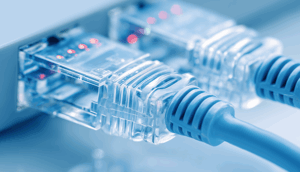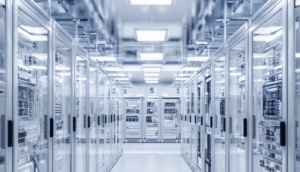In today’s interconnected world, reliable data communication is crucial for the seamless operation of industrial and medical facilities. Industrial data communication cables, specifically designed to withstand harsh environments and demanding applications, play a pivotal role in ensuring network uptime and minimizing downtime. These cables are engineered to transmit data accurately and consistently, even in the presence of electromagnetic interference (EMI), extreme temperatures, and physical stress. Unlike standard commercial cables, industrial-grade cables undergo rigorous testing and certification processes to guarantee their performance and longevity in mission-critical applications.
One of the key factors contributing to the enhanced reliability of industrial and medical data cables is their superior shielding. Shielding protects the data signal from external interference, which can corrupt the data and lead to errors or communication failures. Different types of shielding are available, including foil shielding, braid shielding, and a combination of both. The choice of shielding depends on the specific application and the level of EMI present in the environment. High-quality shielding materials and construction techniques ensure that the data signal remains clean and unaffected by external noise.

Beyond shielding, the construction of industrial and medical cables also emphasizes durability and resistance to harsh conditions. These cables often feature robust jackets made from materials like polyurethane (PUR), thermoplastic elastomer (TPE), or fluoropolymers (e.g., Teflon). These materials provide excellent resistance to abrasion, chemicals, oil, and extreme temperatures. This is particularly important in industrial settings where cables may be exposed to harsh chemicals, cutting fluids, and high levels of mechanical stress. Furthermore, these specialized jackets can resist degradation from UV exposure when used in outdoor environments.
The choice of conductor material and insulation is also critical for ensuring reliable data transmission. Copper is the most common conductor material due to its excellent conductivity and relatively low cost. However, other materials, such as silver-plated copper or oxygen-free copper, may be used for more demanding applications where higher performance and lower signal attenuation are required. The insulation material surrounding the conductors also plays a crucial role in maintaining signal integrity and preventing shorts. Materials like polyethylene (PE), polypropylene (PP), and fluorinated ethylene propylene (FEP) are commonly used for insulation due to their excellent dielectric properties and resistance to moisture.

Proper installation and maintenance practices are essential for maximizing the lifespan and reliability of industrial and medical data communication cables. Cables should be properly supported and routed to prevent strain and abrasion. Connectors should be securely attached and properly shielded to minimize the risk of EMI. Regular inspection and testing can help identify potential problems before they lead to failures. By investing in high-quality cables and following best practices for installation and maintenance, industrial and medical facilities can ensure the reliability of their data communication networks and minimize the risk of costly downtime and operational disruptions.